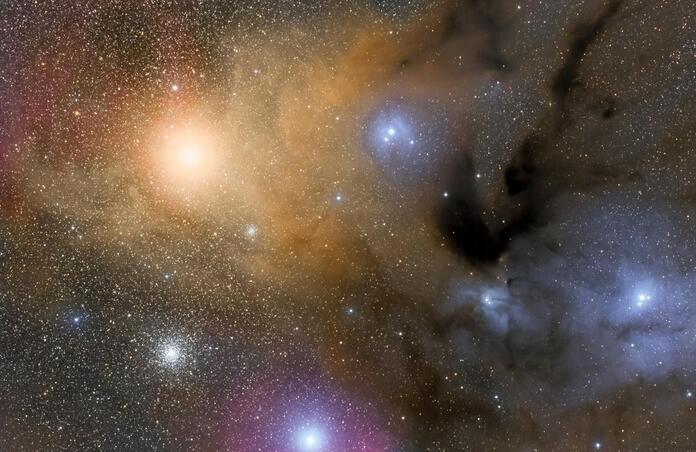NASA Says it's Spotted 5,000 Exoplanets

NASA, as of late, reported that it's found 5,000 exoplanets, an achievement that is required 30 years to accomplish.
An exoplanet is a planetary body beyond our own planetary group. The quest for them began in 1992 with NASA's Exoplanet Exploration Program. The program is liable for finding and concentrating on planetary frameworks around neighboring suns.
NASA involved various telescopes in the program, including Spitzer, Hubble, and the latest James Webb Space Telescope.
"There are a couple of NASA telescopes that can recognize exoplanet climates by straightforwardly noticing the light that the planets emanate or reflect or light from the star that goes through the planet's environment," a NASA delegate told MetaStellar. "Generally, this has been restricted to enormous, hot planets."
One of the best telescopes utilized by NASA was the Kepler space telescope, which found more than 2,600 planets.
Kepler was functional from 2009 to 2018 and was intended to study a piece of the Milky Way universe to find Earth-size planets that circled different stars.
Another mission, Transiting Exoplanet Survey Satellite, was sent off on board a SpaceX Falcon 9 in 2018 to proceed with the quest for exoplanets, and it's affirmed almost 200 exoplanets up until this point.
The Transiting Exoplanet Survey Satellite examines 30 to multiple times more brilliant stars than Kepler studied. It likewise covers an area of the sky that is multiple times bigger.
Out of the 5,000 found exoplanets, just four percent are rough universes about the size of Earth or more modest, and their creations are the most like our home planet.
The other divine bodies range from cold miniature planets to gas goliaths like Jupiter and Saturn.
None of these exoplanets are close by. The first exoplanets found in 1992 by stargazers Aleksander Wolszczan and Dale Frail are found 2,300 light-years from the Sun in the heavenly body of Virgo. They've been named Poltergeist and Phobetor.
Finding these planets doesn't mean they're reachable, accommodating, or contain life.
The exoplanets may not be in the Goldilocks zone or the tenable zone around a star with the proper temperatures for water to stay fluid.
Researchers trust that revelations in the Goldilocks zone, similar to Earth-size planet Kepler-186f, will lead us to water — and perhaps life.
Trend-setting innovations, such as artificial intelligence (AI), are participating in the chase after new planets.
NASA researchers, as of late, added north of 300 new exoplanets to the rundown utilizing ExoMiner, a profound brain network that uses NASA's Pleiades supercomputer and can separate genuine exoplanets from counterfeit ones. ExoMiner advances by using data from past affirmed exoplanets and bogus positive cases.
ExoMiner found the planets from information gathered by Kepler, which no human had the option to approve previously. It had the opportunity to show researchers how it arrived at its decisions.
"Dissimilar to other exoplanet-identifying AI programs, ExoMiner is certainly not a black box - there is no secret concerning why it concludes something is a planet or not," said Jon Jenkins, an exoplanet researcher at NASA's Ames Research Center in California's Silicon Valley. "We can without much of a stretch make sense of which highlights in the information lead ExoMiner to dismiss or affirm a planet."
What's more, another telescope is coming to join the quest for exoplanets.
NASA's fostering the Nancy Grace Roman Space Telescope, an infrared telescope booked to send off by the mid-2020s. It should have the option to impede the light from a star so researchers can recognize the light coming from planets around it. NASA says it will be valuable when a star is too brilliant or a world is excessively weak for direct independent perception.
Moreover, it will have a field of view multiple times more noteworthy than the Hubble infrared instrument, as indicated by NASA.
It is assessed that there is no less than one planet for each star in the cosmic system. That implies there's something on the request for billions of planets in our cosmic system alone, many in Earth's size range.
As a part of our nearby planet group, we are just eight circles circling our SunSun. Finding 5,000 planets past the limits of the peripheral circles is very much an achievement.
While it required 30 years to find the initial 5,000 exoplanets, progress in innovation could speed up that pace.
#### 20AUG2022
Rho Ophiuchi cloud complex (c) Jim DeLillo via TelescopeLive
RHO OPHIUCHII - ONE CLICK
Rho Ophiuchi (ρ Ophiuchi) is a multiple star system in the constellation Ophiuchus. The central system has an apparent magnitude of 4.63. Based on the central system's parallax of 9.03 mas, it is located about 360 light-years (110 parsecs) away. The other stars in the system are slightly farther away.
OBSERVATION DETAILS
Observed on
28 Aug 2021
Observatory
Heaven's Mirror Observatory
Telescope
AUS-2
Object type
Dark Cloud (nebula)
This blog post was originally published in our Telescope Live Community.
The Community represents Telescope Live's virtual living room, where people exchange ideas and questions around astrophotography and astronomy.
Join the conversation now to find out more about astrophotography and to improve your observation and post-processing skills!
